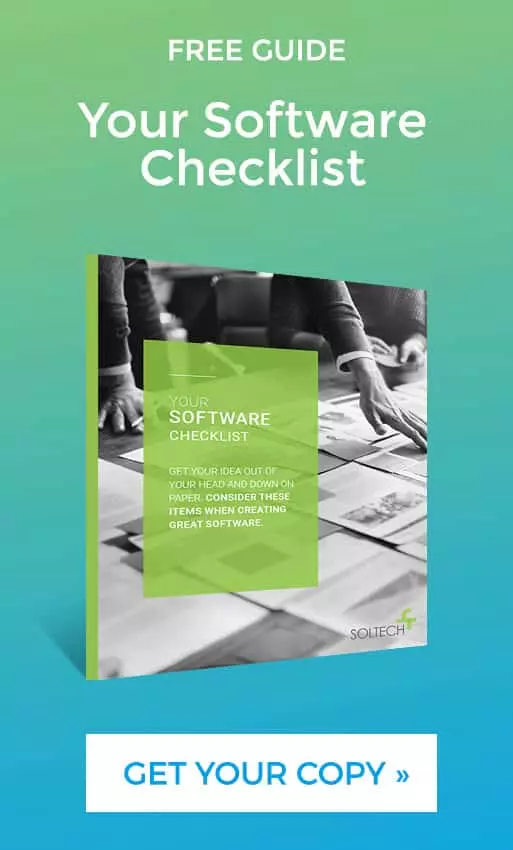
How to Create the Perfect Data Strategy Roadmap
By Thayer Tate
The ability to effectively manage and leverage data is critical to the success of any organization—and that’s far from an understatement. Data-driven companies are 162% more likely to surpass their revenue goals than other businesses. Why? Because organizations that harness the power of their data can uncover valuable insights, optimize operations, and stay ahead of the competition.
However, managing data is not without its challenges. 33% of business leaders say they can’t generate meaningful insights from data, and 30% say they’re overwhelmed by the sheer volume.
In short, the complexities of owning too much data can be challenging to overcome. This is where a well-defined data strategy roadmap comes into play.
A data strategy roadmap or data analytics roadmap provides a structured approach to managing and utilizing data. It aligns data initiatives with business objectives to make sure data usage is focused, efficient, and impactful. By developing a data strategy roadmap, your business will be on the way to becoming a data-driven organization—which outperforms average businesses with 4% higher productivity and 6% higher profits.
To develop a data strategy roadmap for your business, you first have to know what one is. Let’s dive in.
What Is a Data Strategy Roadmap?
A data strategy roadmap is the specific course of action a business will take to implement a data strategy. Data strategy roadmaps move businesses toward their goals by giving them a means to leverage, manage, and examine their data.

Why Do You Need a Data Strategy Roadmap?
Data strategy roadmaps serve as a guide, aligning data initiatives with a business’s overall goals. They guarantee a competitive advantage for businesses by ensuring data gets used effectively to drive decision-making and improve operations. The roadmap provides a detailed, step-by-step guide for executing a data strategy, including the actions, timelines, and milestones necessary to bring the strategy to life, helping to clear up a business’s data management and governance.

How to Create a Data Strategy Roadmap: 8 Steps
To create an effective data strategy roadmap, all aspects of data management and utilization must be addressed and implemented. Here are the steps you can take to develop a data strategy roadmap for your business.
Step 1: Define Your Vision, Objectives, and Timeline
It’s time to set up your goals. What results are you looking for after you implement your data strategy roadmap? Set specific, measurable objectives that align with your organization’s overall business goals. Define what success looks like for your data strategy long term. And, set achievable, short-term milestones that can be measured and tracked.
Step 2: Assess Your Current Data State
Like any good strategy, building your data strategy roadmap starts with understanding the environment you’re in. Start by taking inventory of all data sources and assets within your organization. Then, evaluate the quality of your data to identify any gaps or issues that need to be addressed. Finally, examine your data usage analytics to understand how data is currently being used across different departments and applications.
Step 3: Develop a Data Governance Framework
ata governance is one of the most crucial components of a data strategy. To apply it to your data strategy roadmap, create policies and standards for data management, including data privacy, security, and quality standards. Define the roles and responsibilities for your data governance, including data stewards and data owners. Finally, implement processes that comply with industry regulations and standards.
Step 4: Select the Right Technologies and Tools
Alongside your data strategy, you’re going to need some good tools to help you integrate. Begin by considering different technologies and tools based on the data strategy goals you set earlier. Once you find a tool, make sure it can be integrated into your data workflow. Then, choose a tool you know will be able to scale and adapt to your changing business needs.
Step 5: Implement Data Integration Processes
To create a unified view of data from your data strategy roadmap, you need strong processes for your data. This can include applying ETL processes that move and transform data from different sources into a unified format, standardizing data so it’s consistent across different formats, and putting checks and validations into place so data is accurate and high-quality.
Step 6: Build Analytical and Reporting Capabilities
For your data strategy roadmap to see any returns, you need to invest in data and analytics reporting tools to turn data into actionable insights. Select analytics platforms that can handle your data volumes, provide meaningful insights, and allow for easy data visualization. Make sure the dashboards on those platforms can provide real-time insights and support decision-making.
Step 7: Train and Develop Your Team
Your data strategy roadmap also needs a contingency plan that relies on the team that is managing your data. To train your team effectively, develop training programs to upskill your team on data management, analytics, and governance. Encourage continuous learning of data technologies and practices and build a team culture of knowledge sharing and collaboration.
Step 8: Monitor and Iterate
Finally, after you put your data strategy roadmap into action, you have to monitor the progress and make adjustments along the way. Always keep track of how your data performs against the objectives you set in step two. To continuously make improvements, establish a feedback loop to get comments from stakeholders. Based on their feedback, regularly review and update your data strategy to adapt to changing business needs and technological advancements.

Need Help With Your Data Strategy Roadmap?
At SOLTECH, we understand the complexities and challenges involved in managing data strategies and architecture. Our team of experts is dedicated to helping businesses develop and implement a comprehensive data strategy or data analytics roadmap tailored to their unique needs.
Partnering with SOLTECH means gaining access to our extensive experience and expertise in data management and analytics. We are committed to helping you unlock the full potential of your data, driving innovation, efficiency, and competitive advantage. Contact us today to learn more about how we can assist you in developing a robust data strategy roadmap tailored to your business needs.
Thayer Tate
Chief Technology Officer Thayer is the Chief Technology Officer at SOLTECH, bringing over 20 years of experience in technology and consulting to his role. Throughout his career, Thayer has focused on successfully implementing and delivering projects of all sizes. He began his journey in the technology industry with renowned consulting firms like PricewaterhouseCoopers and IBM, where he gained valuable insights into handling complex challenges faced by large enterprises and developed detailed implementation methodologies.
Thayer is the Chief Technology Officer at SOLTECH, bringing over 20 years of experience in technology and consulting to his role. Throughout his career, Thayer has focused on successfully implementing and delivering projects of all sizes. He began his journey in the technology industry with renowned consulting firms like PricewaterhouseCoopers and IBM, where he gained valuable insights into handling complex challenges faced by large enterprises and developed detailed implementation methodologies.
Thayer’s expertise expanded as he obtained his Project Management Professional (PMP) certification and joined SOLTECH, an Atlanta-based technology firm specializing in custom software development, Technology Consulting and IT staffing. During his tenure at SOLTECH, Thayer honed his skills by managing the design and development of numerous projects, eventually assuming executive responsibility for leading the technical direction of SOLTECH’s software solutions.
As a thought leader and industry expert, Thayer writes articles on technology strategy and planning, software development, project implementation, and technology integration. Thayer’s aim is to empower readers with practical insights and actionable advice based on his extensive experience.



